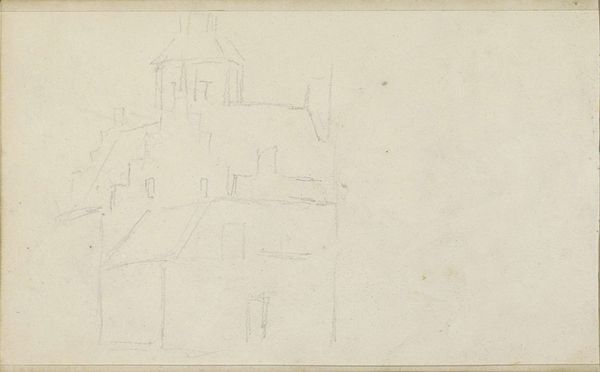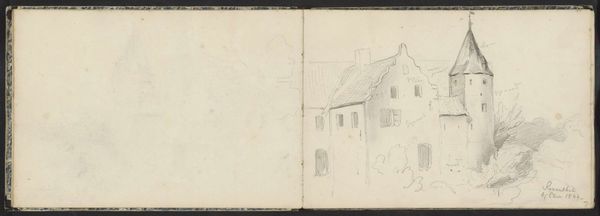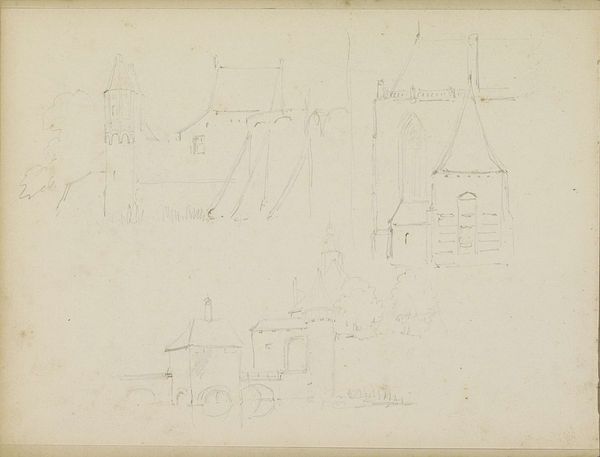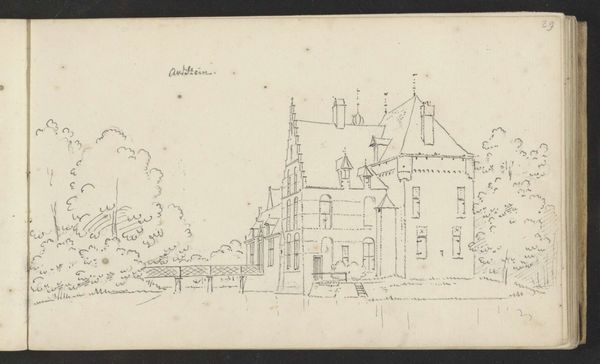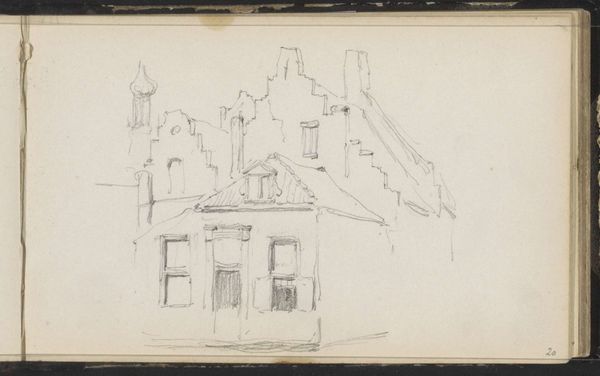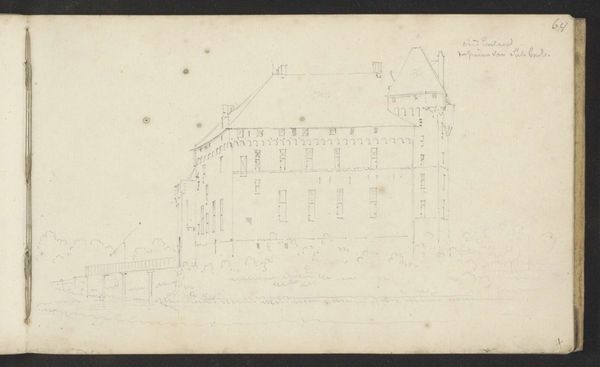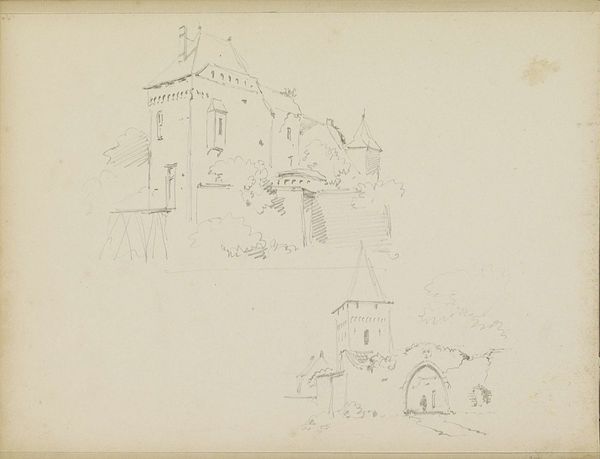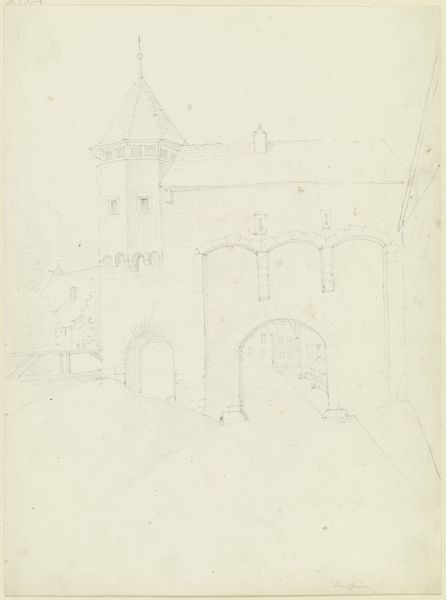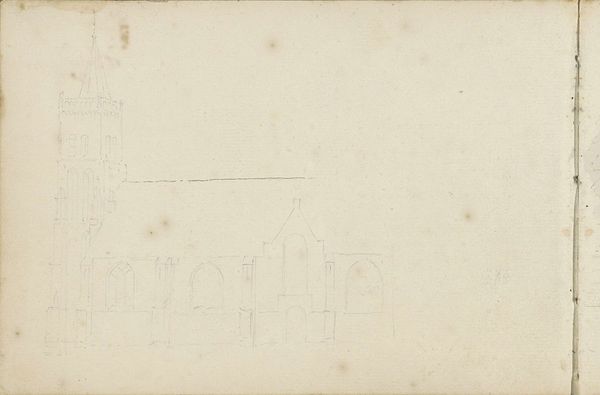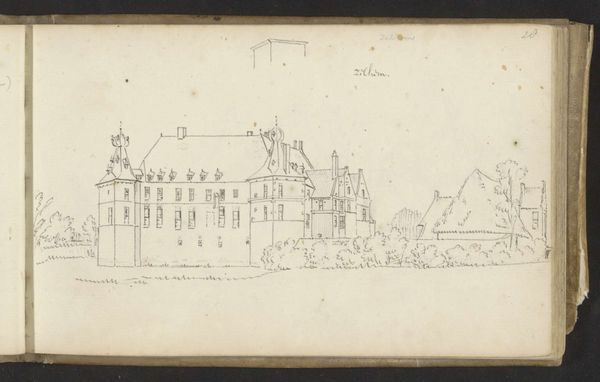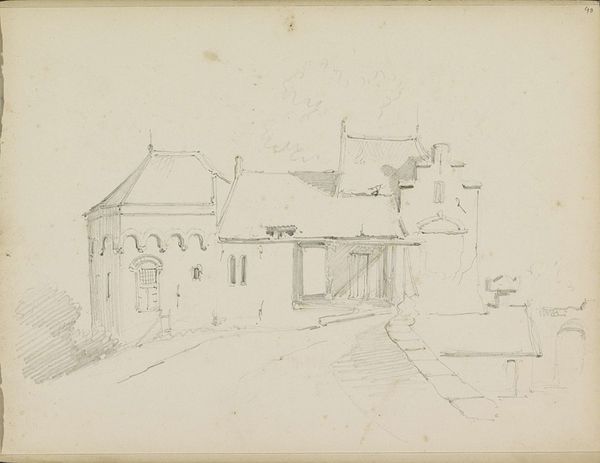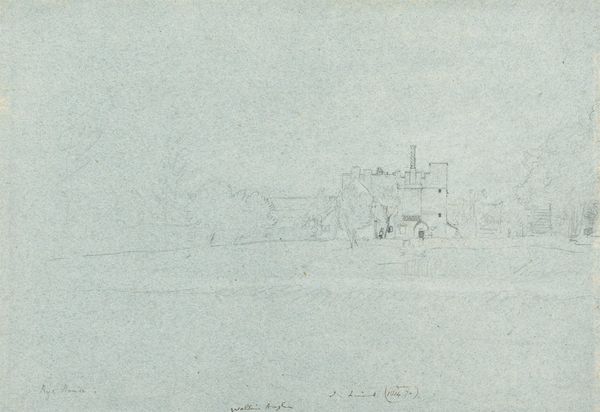
drawing, pen, architecture
#
drawing
#
dutch-golden-age
#
landscape
#
pen
#
cityscape
#
architecture
Copyright: Rijks Museum: Open Domain
Curator: Looking at this drawing, titled "Landgoed Nijenburg te Heiloo" by Abraham Meyling, made with pen during the Dutch Golden Age, I'm struck by its architectural precision. It gives us a real glimpse into the visual culture of the time, doesn't it? Editor: It's interesting, but to me, it feels almost dreamlike, faint as if surfacing from a forgotten memory. The pen strokes are so delicate. It certainly evokes a sense of serenity and maybe even a touch of melancholy, wouldn't you agree? Curator: It’s interesting you say that. Considering Meyling's body of work and the broader context of landscape art during that era, drawings like these were often commissioned or created to document estates. These were about signaling social status as much as aesthetic appreciation, really playing into the politics of imagery, in my view. Editor: Yes, but still. Notice the symmetrical façade, and the way the artist has represented details such as the building ornaments...These feel like symbols of stability and order. Also, those small rooftop decorations, are they some representation of local mythology or a family crest, carrying generations of significance within a landed family? Curator: That’s a great point about order. The symmetry, though seemingly straightforward, underscores the visual rhetoric of control over the land. During the Dutch Golden Age, there was a strong tie to displaying that power through land ownership. Editor: And it's curious how the faint lines and open composition invite us to project our own interpretations onto the image, allowing this image to function beyond a historical document. Its emptiness transforms into an evocative canvas, allowing contemplation and a strange kind of access to past emotional experiences. Curator: Exactly. Even these quiet artistic choices end up bolstering that message of social distinction and what power signifies. Editor: Precisely. Ultimately, this dialogue highlights how what seems simple or self-evident in visual representation always operates on numerous levels that converge over time, with layer upon layer of symbolic nuance that’s so resonant. Curator: Well, reflecting on the function this piece held at its inception versus our interpretation today reminds us of art’s uncanny ability to act as a time capsule. A tool for reflection not just of the past, but about ourselves.
Comments
No comments
Be the first to comment and join the conversation on the ultimate creative platform.
